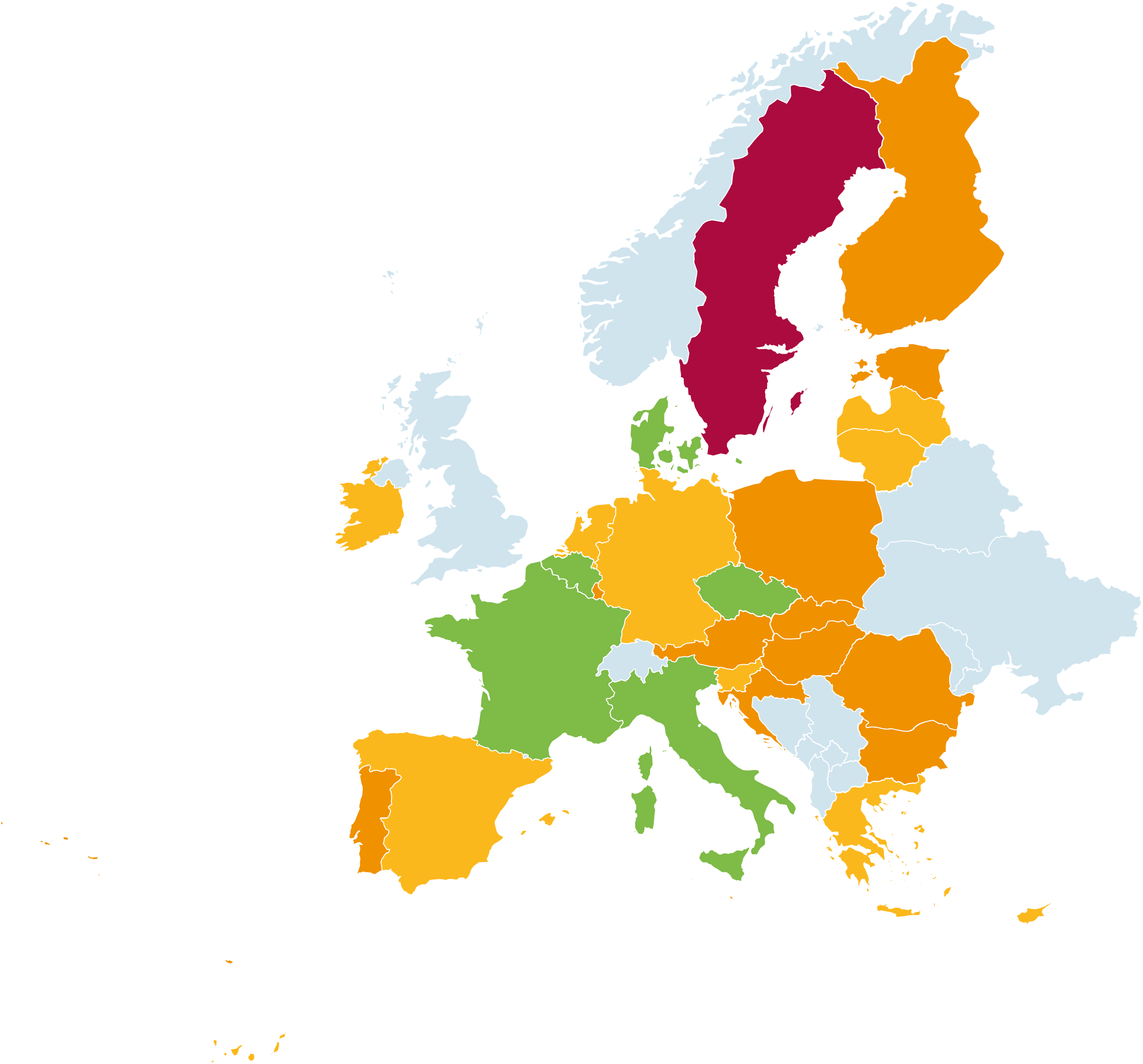REC & CEC definitions
Definitions

Here is an explanation of the logic behind the colours:
How to understand and use this tracker
The purpose of the transposition tracker is to assess the progress of the transposition of the provisions on definitions for RECs and CECs, as well as enabling frameworks and national support schemes for RECs. These provisions were introduced by the Renewable Energy Directive (RED II) and the Internal Electricity Market Directive (IEMD). It should be noted that the deadline for the transposition of the IEMD and the RED II into national legislation has already passed.
The map above provides an overall comparative assessment of the progress of the transposition with regards to the definitions in the different European Member States following a modified traffic light grading system. Each Member State has a specific colour to represent how far they have progressed towards transposing EU rules on energy communities.
Each Member State’s overall grade is informed by a qualitative assessment based on a set of indicators representing the elements that must be included to properly transpose provisions on definitions for RECs and CECs, and enabling frameworks and support schemes for RECs. When clicking on a specific country, you will find an overall descriptive assessment of the national legislation that transposed the EU definitions, as well as a table with a short but detailed assessment of each indicator. The sources that we used for the assessment of the transposition process in each country are the legislative texts which were made public, either on a final version or a draft.
How we assessed each country’s REC and CEC definitions
In particular, we have evaluated whether:
- the criteria of the EU definitions are reflected in the national legislation;
- there is detailed elaboration of the principles contained in the EU criteria;
- there is a clearly defined purpose of the REC and CEC definitions in the national legislation;
- the ICA cooperative governance principles are reflected in the national definition;
- specific legal entities are allowed;
- citizen participation is ensured;
- there is a designated authority appointed to oversee and monitor the RECs and CECs;
- the MS transposed one or both definitions (or none in some cases); and
- there is coherency between the 2 definitions.
Each indicator has been graded with a colour based using the modified traffic light system. It should be highlighted that in countries that have not transposed yet, we evaluated the existing legislation on energy communities or energy cooperatives (where such legislation exists). The overall grade is a compilation of the different grades for each of the indicators.